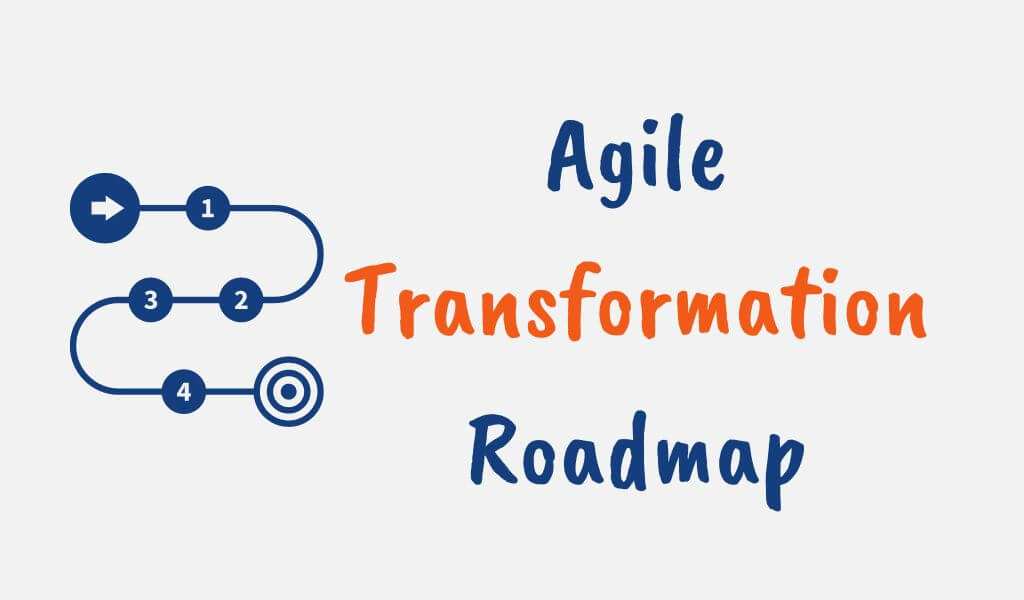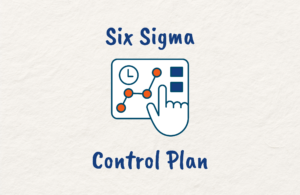Agile transformation has become a buzzword in recent years and for good reason. More organizations are realizing the need and benefits of adopting an agile mindset to improve their business processes and stay competitive in a rapidly evolving landscape.
If you want to get started with your Agile transformation journey or need a refresher on this subject, then this comprehensive guide is what you need as it gives you everything you need to know about creating an effective Agile Transformation Roadmap.
What is Agile Transformation?
Agile transformation is the process of changing an organization’s traditional and hierarchical way of working to a more flexible, collaborative, and iterative approach that embraces change and continuous improvement.
For a lot of organizations, the old style of working was rigid and didn’t adapt well to change. The Agile way however is open to change and improving bit by bit from learning.
To keep up with the modern fast-paced business world, a lot of companies have realized that being agile is key and thus need a shift from the old way.
This shift is typically achieved by adopting Agile methodologies, such as Scrum, Kanban, or Lean, and embedding them into the organizational culture.
However, for lots of organizations seeking to transform to a more agile way of working, this is easier said than done as 50 to 96% of Agile transformation processes have failed since the advent of the Agile Manifesto.
To be successful in actually transforming the organization’s way of working and developing an agile workforce requires a well-crafted and executed strategy and roadmap.
The Goal of Agile Transformation
The goal of an Agile transformation is to improve business outcomes by:
- Shortening the time to market for new products and services
- Increasing the quality of deliverables
- Enhancing customer satisfaction
- Building a more engaged and collaborative workforce
- Fostering a culture of innovation and continuous improvement
What is an Agile Transformation Roadmap?
An Agile Transformation Roadmap is a strategic plan that outlines the steps an organization needs to take in order to transition from traditional project management methodologies to Agile practices.
It serves as a guide, providing milestones, objectives, and key performance indicators (KPIs) to track progress towards a more flexible and adaptive work environment.
The roadmap helps organizations align their goals, resources, and teams to ensure a smooth transition while fostering a culture of continuous improvement and collaboration.
Ultimately, the Agile Transformation Roadmap paves the way for organizations to reap the benefits of Agile, such as faster delivery, improved quality, and enhanced customer satisfaction.
The Importance of an Agile Transformation Roadmap
An Agile Transformation Roadmap is a strategic plan that outlines the steps and milestones needed to achieve a successful agile transformation.
It is a crucial tool to guide organizations through the complex process, as it helps to:
- Set clear, realistic, and measurable objectives
- Identify the required resources, roles, and responsibilities
- Establish a timeline with milestones to track progress
- Communicate the vision and goals to all stakeholders
- Address potential risks, challenges, and obstacles
- Ensure alignment and commitment from all levels of the organization
Without a well-defined roadmap, your agile transformation efforts might be scattered, disjointed, and ultimately ineffective.
Therefore, it is essential to invest the time and resources necessary to create a solid Agile Transformation Roadmap.
Key Principles of an Agile Transformation Roadmap
Before we dive into the steps to create an Agile Transformation Roadmap, let’s review some key principles that should guide your efforts:
- Start with a clear vision and goals: Understand the “why” behind your Agile transformation and define specific, measurable, and achievable goals to guide your efforts.
- Adopt a customer-centric approach: Keep your customers’ needs and expectations at the center of your transformation efforts, striving to deliver enhanced value and a better experience.
- Embrace change and continuous improvement: Agile transformation is not a one-time event; it is a continuous journey that requires ongoing learning, adaptation, and improvement.
- Focus on people and culture: Agile transformation is not just about implementing new processes and tools; it is about fostering a cultural shift towards collaboration, empowerment, and innovation.
- Measure and assess progress: Establish key performance indicators (KPIs) to track your Agile transformation progress and adjust your roadmap as needed to achieve your goals.
Agile Transformation Roadmap Template
This template provides a high-level overview of the steps an organization can take to transition to Agile practices. Adapt this template to fit the unique needs and circumstances of your organization.
1. Executive Sponsorship and Commitment
- Identify executive sponsors
- Communicate the vision and benefits of Agile transformation
- Establish a clear commitment from leadership
2. Assess Current State
- Evaluate current processes, practices, and culture
- Identify strengths, weaknesses, and opportunities for improvement
- Define the desired Agile state and goals
3. Develop an Agile Transformation Strategy
- Define the scope of transformation (e.g., teams, departments, projects)
- Select Agile frameworks and methodologies (e.g., Scrum, Crystal Agile, Kanban, SAFe)
- Develop a change management plan
4. Establish Agile Training and Coaching
- Provide Agile training for all team members
- Identify and train internal Agile champions or coaches
- Consider external Agile coaching support as needed
5. Pilot Agile Teams
- Select pilot projects or teams
- Implement Agile practices and frameworks
- Gather feedback and iterate on processes
6. Scale Agile Practices
- Expand Agile adoption to additional teams and projects
- Continuously refine and improve Agile processes
- Share success stories and lessons learned
7. Measure and Track Progress
- Establish Agile KPIs and metrics
- Monitor progress towards Agile goals
- Conduct regular reviews and retrospectives
8. Foster a Culture of Continuous Improvement
- Encourage learning and experimentation
- Promote collaboration and open communication
- Reward and recognize Agile successes
9. Institutionalize Agile Practices
- Integrate Agile principles into organizational policies and procedures
- Ensure ongoing support and resources for Agile teams
- Continuously assess and refine Agile practices
Remember, Agile transformation is an ongoing journey and it’s essential to continually evaluate and adapt your roadmap based on the needs of your organization and the feedback from your teams.
Common Challenges Faced in Agile Transformation
Agile transformations are complex endeavors, and it is not uncommon for organizations to encounter challenges along the way. Some common pitfalls to watch out for include:
1. Insufficient Executive Support
Without strong leadership commitment, Agile transformations can stall or fail to gain traction. Ensure that your executive team is actively engaged and supportive of the transformation efforts.
2. Inadequate Communication
Poor communication can lead to confusion, resistance, and a lack of alignment. Be transparent about your goals, progress, and challenges, and involve stakeholders in the process.
3. Neglecting Organizational Culture
Focusing solely on processes and tools while ignoring the cultural aspects of Agile transformation can lead to suboptimal results.
Foster a culture of collaboration, empowerment, and continuous learning to support your Agile transformation.
4. Resistance to Change
Change can be difficult, and some team members may feel threatened or uncomfortable with the new ways of working.
Address resistance head-on by providing training, support, and clear communication about the benefits of the transformation.
5. Overlooking the Importance of Continuous Improvement
Agile transformation is an ongoing journey that requires continuous learning and adaptation. Regularly assess your progress and adjust your roadmap as needed to stay on track and achieve your goals.
Measuring and Assessing Your Agile Transformation
To ensure that your Agile transformation is on track and delivering the expected benefits, it is essential to measure and assess your progress.
Some key performance indicators (KPIs) and metrics that can help you track your transformation success include:
1. Time to Market
Track how long it takes to deliver new products or services from ideation to release. Ideally, one goal of Agile transformation is to help you shorten this cycle time.
2. Quality of Deliverables
Measure the quality of your products or services, such as defect rates or customer satisfaction scores. Agile transformation should lead to improved quality.
3. Employee Engagement
Assess the level of employee engagement and satisfaction within your organization as Agile transformation should foster a more engaged and collaborative workforce.
4. Customer Satisfaction
Monitor customer satisfaction levels to ensure that your Agile transformation efforts are resulting in improved experiences and value for your customers.
5. Innovation and Continuous Improvement
Track the number of new ideas, initiatives, and improvements implemented within your organization. Agile transformation should encourage a culture of innovation and continuous improvement.
6. Lead Time
The time it takes from the start of a task, such as a new feature or bug fix, until its completion. Agile transformations aim to reduce lead times, allowing for faster delivery of value to customers.
7. Cycle Time
The time it takes to complete a task or work item once it has been started. Reduced cycle times indicate an improvement in the efficiency of your development process.
8. Throughput
The number of work items completed within a specific time period, such as per sprint or per week. An increase in throughput is a sign of improved productivity.
9. Work in Progress (WIP)
The number of tasks or work items currently in progress. By limiting WIP, Agile teams can reduce context switching and focus on completing tasks more efficiently.
10. Escaped Defects
The number of defects or issues found in production or by customers. Agile transformations should lead to a decrease in escaped defects due to improved quality assurance and continuous feedback loops.
12. Team Velocity
This is the amount of work a team can complete within a specific time period, often measured in story points or completed tasks.
An increasing team velocity can indicate improved efficiency and productivity.
13. Percentage of Automated Tests
The proportion of tests that are automated can help reduce manual testing efforts and improve overall quality.
Agile transformations often involve increased automation to support continuous integration and delivery.
These KPIs can help organizations track Agile transformation progress and identify areas where adjustments may be needed.
Keep in mind that it is essential to select the KPIs that are most relevant to your specific organization, goals, and context, and to review and adapt them as your agile transformation progresses.
Final Thoughts
Embarking on an Agile transformation journey is a significant undertaking, but with a well-defined Agile Transformation Roadmap and a commitment to the key principles, your organization can reap the benefits of increased agility, innovation, and customer satisfaction.
It’s important to start with a clear vision and goals, adopt a customer-centric approach, embrace change and continuous improvement, focus on people and culture, and measure and assess your progress.
By following these steps and avoiding common pitfalls, your organization will be well on its way to a successful agile transformation.





